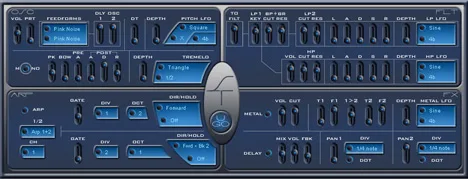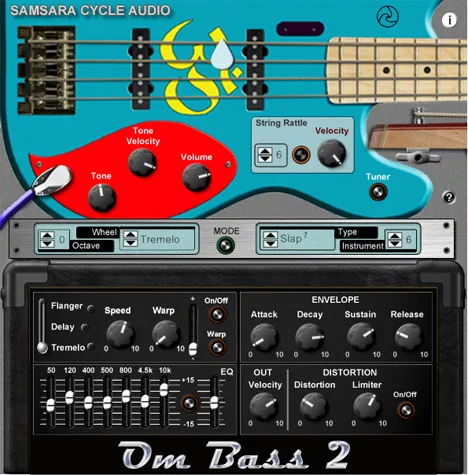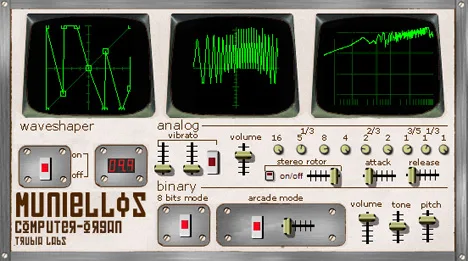Meet String Theory by Ugo Audio – a unique virtual instrument that opens up new horizons in the world of synthesis and string instrument modeling. This VST plugin is specifically designed for musicians, producers, and sound engineers who strive to obtain realistic, expressive, and extremely flexible sounds of plucked strings without resorting to samples.
What is String Theory?
String Theory is not just another synthesizer. It is an instrument based on physical modeling technology. This means that instead of playing back recorded sounds (samples), the plugin imitates the physical properties of a string, its vibration, interaction with the resonator, and other acoustic phenomena that occur during playing. This approach allows you to achieve an incredibly realistic, lively, and dynamic sound that responds to the smallest nuances of your playing.
Imagine that you have a virtual instrument at your disposal, the behavior of which is as close as possible to the real one. You can experiment with parameters that simulate string tension, material, instrument size, plucking point, and many other factors. This gives you unprecedented control over the timbre and character of the sound, allowing you to create both classic and completely unique, ethereal textures.
Key Feature: Dual Phrase Arpeggiators
One of the most outstanding and powerful features of String Theory is its dual phrase arpeggiator system. This is not a standard arpeggiator that simply goes up or down the notes. Here you get two independent modules, each of which can play complex patterns and phrases.
Each of these arpeggiators has its own independent parameters:
- Speed: Allows you to set an individual tempo for each arpeggiator. You can create polyrhythmic structures where one arpeggio plays faster than the other, or use different note divisions to create intricate rhythmic patterns.
- Gate: Adjusts the duration of each note in the arpeggio. This makes it possible to form staccato or legato phrases, make them more choppy or smooth, which significantly affects the overall character of the pattern.
- Octave: Defines the octave range in which the arpeggiator will work. This allows you to distribute notes in different registers, creating wide, voluminous arpeggios or concentrating them in a certain range.
Imitation of “Finger” Guitar Playing
The special value of the dual arpeggiators of String Theory lies in their ability to imitate the “finger picking” technique – finger playing on the guitar. Thanks to the independent control over the rhythm, duration and octaves of individual “strings” (notes), you can create patterns that closely resemble complex guitar picking. This makes String Theory an excellent tool not only for electronic music, but also for genres where organic, “live” string sounds are needed, such as folk, ambient or soundtracks.
Application Possibilities
String Theory is perfect for a wide range of musical tasks:
- Creating unique melodies and lines: Use physical modeling and arpeggiators to generate fresh, interesting melodic ideas.
- Rhythmic elements: Dual arpeggiators can become a source of complex, hypnotic rhythmic patterns that will form the basis of your composition.
- Textures and background sounds: Experiment with modeling parameters to create atmospheric, ambient textures reminiscent of stringed instruments.
- Imitation of acoustic instruments: Although it is a synthesizer, it can quite convincingly imitate the sound of a lute, harp, sitar and other plucked strings due to the flexibility of physical modeling.
Technical Specifications
String Theory is available in VST format. Unfortunately, it currently only supports 32-bit Windows operating systems (Win32). Before downloading, make sure that your DAW and operating system are compatible with this format.
Conclusion
String Theory by Ugo Audio is a powerful and inspiring instrument for anyone interested in unconventional synthesis and realistic modeling of string sounds. Its unique dual arpeggiator system opens up endless possibilities for creating complex rhythmic and melodic structures, including convincing imitation of guitar “finger picking”. If you are looking for a fresh sound for your compositions and are ready to experiment, String Theory is definitely worth your attention.
Download String Theory today and start exploring string theory in music!



